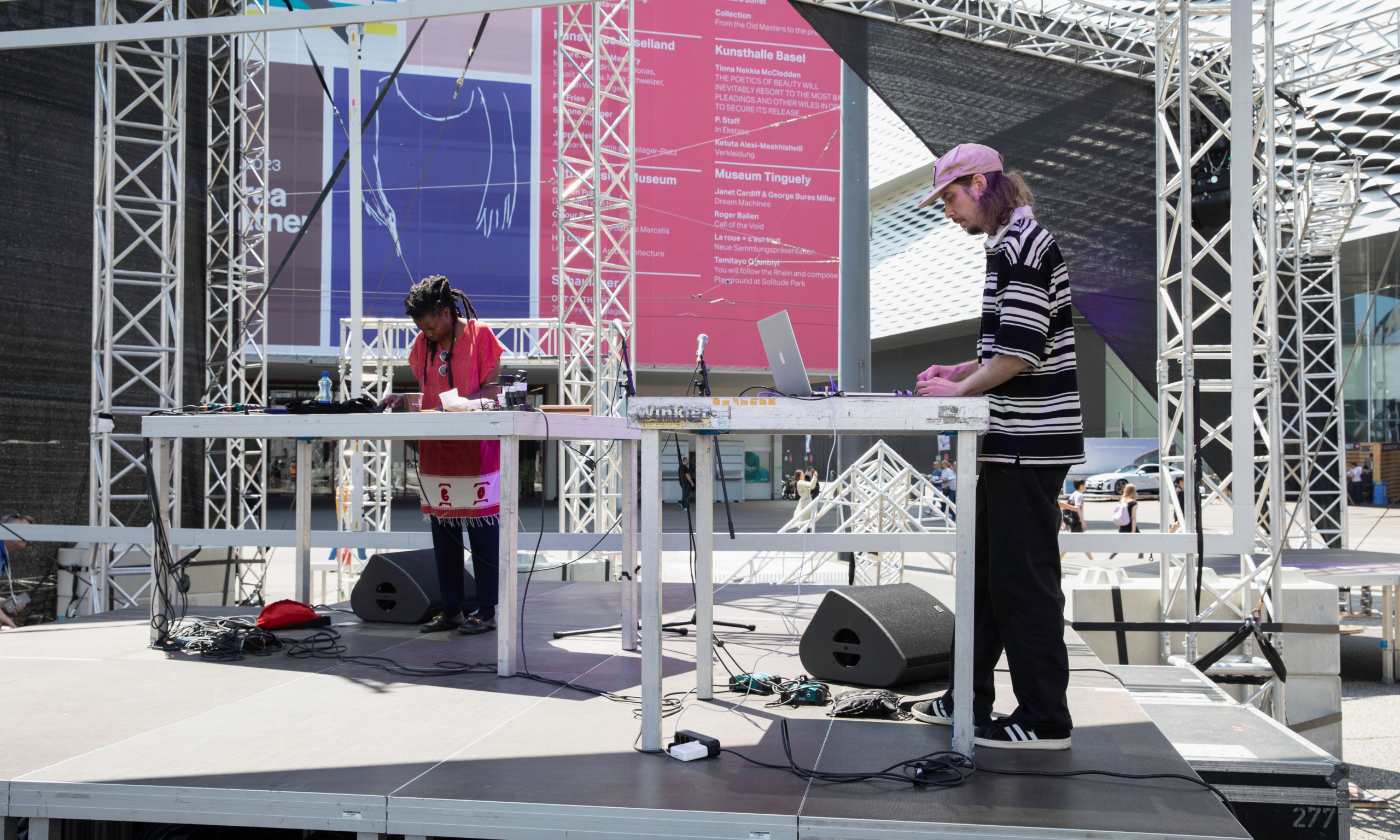This year’s Art Basel Messeplatz commission Photo: David Owens
Latifa Echakhch wants it to be a surprise. The Swiss-based, Moroccan-born artist’s work for this year’s Art Basel Messeplatz commission is an empty, deconstructed stage. “It’ll look like a big, empty installation—a quiet one,” she tells The Art Newspaper. That is, until the performers turn up. The work—titled Der Allplatz, loosely translated as “the space for all”—will be home to intermittent performances of experimental music. As fairgoers in the square meet with friends and associates, or members of the public wait for one of Basel’s trams, musicians, including the Brooklyn-based cellist and sound artist Leila Bordreuil, will break out their bows.
Echakhch also hopes that the sounds will be just as unexpected as their performance, recreating her own epiphanic feeling of stumbling across this “strange music” when she was 21. She names Pierre Henry, Alvin Curran, Terre Thaemlitz, Mika Vainio, Ryoji Ikeda as some of the artists she found early on. She is curious about how the music will be received by people who hear it by chance.
The artist started working on this project after the close of her Venice Biennale exhibition The Concert. In a radical break from her previous work, she approached it as a “musician” rather than a “visual artist”, filling the Swiss pavilion with experimental sounds, harmonies and dissonances. She wanted visitors to leave with “the same feeling as when they come out of a concert”.
The difference is that, by the time Biennale visitors arrived at the Swiss pavilion, they knew at least partially what to expect. At Art Basel, however, “people are prepared to see art; the most challenging thing about this commission is that people—even those from the art world—may not be prepared to hear what I will present,” she says. Indeed, this is the essence of the work; how a space, much like a musical composition, can be pushed beyond the boundaries of expectations.
Crucially, the stage—with its 360-degree view—is free and open to all, even those without passes to the fair. This was important to the artist, who points out that the Messeplatz does not belong to the fair. “It’s part of the Allmend [or the ‘common’, meaning it belongs to the canton of Basel]”, she says, “literally translating to ‘what belongs to everyone’.”
Central to these unpredictable reactions will be disorientation. You are looking at a semi-collapsed stage, Echakhch reminds us. Some people may be wondering if it is finished or if they are supposed to be waiting for something else, she adds. But this disorientation is supposed to elicit feelings of “discomfort” and “catharsis”. Discomfort because the project asks the viewer to do some work as they wait, to contend with their imagination or engage in “projection”, as Echakhch describes it. And catharsis, since in the socially exacting, etiquette-laden world of the art fair, perhaps a bit of discomfort is what visitors need.
• Messeplatz Project: Latifa Echakhch, Messeplatz, throughout Art Basel

